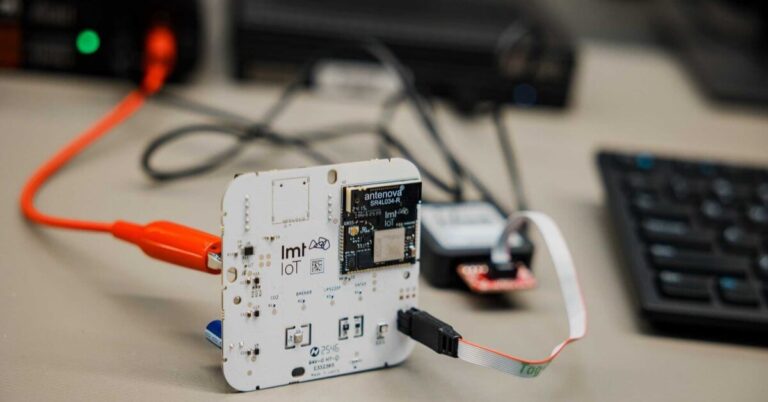Why Gartner’s $1.5T AI Spend Matters for Telecom and Enterprise IT Strategy
Gartner’s latest outlook points to global AI spend hitting roughly $1.5 trillion in 2025 and exceeding $2 trillion in 2026, signaling a multi-year investment cycle that will reshape infrastructure, devices, and networks.
What the $1.5T Signal Means for Infrastructure and Growth
This is not a short-lived hype curve; it is a capital plan. Hyperscalers are pouring money into data centers built around AI-optimized servers and accelerators, while device makers push on-device AI into smartphones and PCs at scale. For telecom and enterprise IT leaders, the message is clear: capacity, latency, and data gravity will dictate where value lands.
Spending is broad-based. AI services and software are growing fast, but the heavy lift is in hardware and cloud infrastructure. Gartner’s category view shows AI-optimized servers and AI processing semiconductors as major growth engines, with AI-optimized IaaS also expanding rapidly from a smaller base. In 2026, generative AI smartphones are expected to be the single largest spend category, outpacing services, underscoring how AI is moving from cloud-only to hybrid and device-native deployment models.
Why Act Now: Competitive and ROI Implications
Enterprises may still be validating ROI, yet investment is accelerating because competitive pressure has moved from pilots to platforms. Network operators, cloud providers, and large enterprises that align capex, data architecture, and talent around AI workloads in 2025–2026 will set the pace on cost-to-serve and time-to-insight. Those that wait will face higher unit costs, congested supply chains, and customer churn to AI-enabled rivals.
Where AI Spend Accelerates in 2025–2026
The spending mix highlights four vectors to watch: infrastructure, devices, software and services, and model delivery.
Infrastructure: GPUs, Accelerators, and AI-Optimized IaaS
GPUs and non-GPU accelerators anchor growth in AI-optimized servers, combined with AI-optimized infrastructure-as-a-service from hyperscalers. Expect continued build-outs from AWS, Microsoft Azure, Google Cloud, and Oracle Cloud, alongside expansions by colocation providers such as Equinix and Digital Realty. Supply and power constraints will keep liquid cooling, high-density racks, and advanced interconnects (CXL and PCIe 5/6) at the center of design choices.
Semiconductor spend rises in tandem. NVIDIA, AMD, and Intel will compete across training and inference, while Arm’s ecosystem, custom silicon from hyperscalers, and specialized NPUs push efficiency and cost-per-token down. UCIe-based chiplet strategies will further shape performance-per-watt and time-to-market.
Devices: GenAI Smartphones and AI PCs at Scale
Generative AI smartphones and AI PCs become a headline driver by 2026, reflecting a shift to on-device inference. Apple, Samsung, and leading Android OEMs are scaling NPUs, while Qualcomm, MediaTek, and Apple silicon dominate mobile AI engines. In PCs, Microsoft’s Copilot+ design point is steering the ecosystem, with Intel, AMD, and Qualcomm racing to deliver sustained TOPS under tight power envelopes.
For enterprises, this means more AI at the edge, lower latency, better data privacy, and new workload placement decisions across device, edge, and cloud. It also implies network policy updates to prioritize model updates, embedding, and federated learning flows.
Software, Services, and Model Operations
AI services and application software keep rising, driven by integration, orchestration, and safety requirements. Expect consolidation around model operations tooling, vector databases, and agent frameworks that tie LLMs to enterprise systems of record. Model spending grows as organizations balance closed models from providers with open-source options tuned for domain-specific use.
Telecom Network and Data Center Implications of AI
AI’s capex wave lands squarely on power, interconnect, and workload placement across core, metro, and edge.
Backbone, Peering, and Data Center Interconnect
GPU clusters demand high-throughput, low-latency fabrics inside the data center and across regions. Telcos and carriers should expand 400G/800G transport, upgrade peering strategies with major clouds, and re-evaluate IP-optical convergence to reduce cost per bit for AI data pipelines. Traffic patterns will be more east–west and model-update heavy, stressing metro interconnects.
Edge and On-prem AI for MEC and Private 5G
Use cases like content moderation, digital twins, video analytics, and industrial automation pull inference to MEC and private 5G sites. Operators can differentiate with deterministic latency and data residency by aligning ETSI MEC deployments, 5G SA slicing, and GPU/accelerator footprints at the edge. Integration with O-RAN SMO and RIC opens new monetization for closed-loop automation and QoS-aware AI workloads.
RAN Intelligence, Automation, and Operations
3GPP Releases 18/19 and the O-RAN Alliance are codifying AI/ML hooks for RAN optimization, energy savings, and anomaly detection. Expect AI to influence spectrum efficiency, beamforming, and predictive maintenance. Toolchains must span data collection, feature stores, and model lifecycle in production-grade environments.
AI Strategy Checklist for CIOs, CTOs, and Telcos
Plan now for supply, power, talent, and data constraints to turn AI spend into measurable outcomes.
Align Capex and Vendor Strategy for AI
Secure multi-year capacity across GPUs, DPUs, NPUs, and high-bandwidth memory, and diversify across NVIDIA, AMD, and Intel where feasible. Negotiate AI-optimized IaaS commitments with flexibility for spot and reserved capacity. For network gear, prioritize platforms that are liquid-cooling ready and support 400G/800G migrations.
Modernize Data Architecture and Governance for AI
Invest in data quality, lineage, and access controls to reduce model drift and security risk. Standardize on vector stores, retrieval frameworks, and feature management that work across cloud and edge. Build a clear policy for model selection, evaluation, and red-teaming across closed and open models.
Track AI Cost-to-Value Rigorously
Instrument end-to-end cost—training, inference, storage, and network—per use case. Set guardrails for agentic workloads and tie budgets to business KPIs like customer acquisition, fraud loss reduction, field service MTTR, or energy savings in the RAN. Kill low-yield pilots quickly and scale only where unit economics prove out.
AI Risks and Constraints to Watch
Execution risk is high as demand outpaces power, supply, and skilled labor.
Supply Chain, Power, and Cooling Constraints
Lead times for advanced accelerators, HBM, and optical components remain variable. Power availability and grid interconnects will bottleneck several regions, pushing operators toward brownfield retrofits, liquid cooling, and heat reuse strategies. Expect location decisions to track renewable availability and tax incentives.
Regulation, Sovereignty, and Security for AI
Evolving AI safety rules, data localization, and sectoral compliance will shape deployment choices. Telecom operators should align with GSMA Open Gateway for exposure APIs and strengthen model governance to withstand audits. Security baselines must cover prompt injection, data exfiltration, and model supply-chain risks.
Key AI Companies, Consortia, and Standards to Watch
Partnerships will determine speed to scale and interoperability across the stack.
Cloud and Silicon Leaders in AI
Watch AWS, Microsoft, Google Cloud, and Oracle for AI-optimized regions and networking upgrades. In silicon, track NVIDIA’s platform roadmaps, AMD’s Instinct portfolio, Intel’s Gaudi and Xeon AI, Arm-based designs, and custom accelerators from hyperscalers. For interconnect and memory, follow CXL 3.x, PCIe 6.0, and UCIe progress.
Telecom Ecosystem and Standards for AI
Ericsson, Nokia, Samsung Networks, Cisco, Juniper, and Arista are aligning portfolios to AI-era traffic and automation. Standards bodies, including 3GPP, the O-RAN Alliance, and ETSI MEC, will influence where AI runs and how it is managed across RAN, transport, and edge.
Bottom Line on AI Spend
Gartner’s forecast confirms that AI is becoming an infrastructure imperative, not a side project, and winners will be those who turn spend into service differentiation, lower unit costs, and faster innovation cycles.
What to Do Next
Lock in capacity, modernize data and governance, align network and edge to AI workload patterns, and measure ROI relentlessly—because the spend is coming either way, and the gap between leaders and laggards will widen through 2026.









































